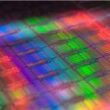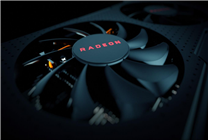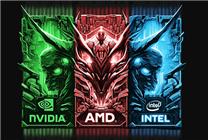AMD’s Revolutionary Advances in GPU Technology: The UDNA/RDNA5 Architecture
Summary
- AMD is set to enhance GPU performance with its next-generation UDNA/RDNA5 architecture, focusing on ray tracing and animation capabilities.
- The Dense Geometry Format (DGF) is key to optimizing memory bandwidth and computational efficiency.
- Upcoming GPUs will integrate DGF at the hardware level, further boosting performance and reducing latency.
On October 1, AMD made significant strides in GPU technology, revealing its next-generation UDNA/RDNA5 architecture, poised to revolutionize ray tracing and animation performance. According to insights shared via AMD’s GPUOpen blog, the focal point of these advancements is the innovative Dense Geometry Format (DGF), which promises to significantly enhance how GPUs handle modern animation and ray tracing requirements.
What is Dense Geometry Format (DGF)?
DGF technology fundamentally transforms the processing of geometric data within GPUs. Traditionally, graphics processing units manage large triangle meshes to render animations, a method that not only demands extensive memory bandwidth but also escalates the computational load on the system. In contrast, DGF effectively mitigates these challenges by segmenting these large triangle meshes into smaller, more manageable "mesh blocks." The data for each block is then stored in a dense format, optimizing both space and performance.
- Memory Bandwidth Savings: DGF minimizes memory bandwidth consumption, crucial for high-performance gaming and graphics applications.
- Efficient Data Management: By partitioning data into smaller blocks, GPUs can process complex geometric information more swiftly and efficiently.
The Impact of DGF on Ray Tracing Performance
Ray tracing has garnered attention for its realism in graphics rendering, but it comes with its own set of demands, particularly concerning the reconstruction of boundary volume hierarchy (BVH). DGF addresses this by allowing GPUs to comprehend the formatted data directly, significantly cutting down on the overhead linked to BVH reconstruction. This development not only curtails resource consumption but also elevates overall ray tracing performance.
- Lower Overhead: DGF’s direct data compatibility leads to less resource-intensive operations during ray tracing.
- Enhanced Performance: The ability to process ray tracing tasks more seamlessly contributes to a richer visual experience in games and animations.
Future Integrations and Advancements
Currently, DGF processing is executed primarily within AMD’s computing shader units. However, the next generation of the UDNA architecture will likely see DGF integrated into fixed-function hardware units. This upgrade is expected to facilitate a pronounced increase in animation processing speed, allowing for smoother rendering and more intricate visual effects.
Additionally, the DGF compression technology’s capabilities extend beyond just ray tracing enhancements. By significantly decreasing resource overhead, this technology allows for more geometric data to be stored within the GPU cache. Consequently, this minimizes latency and bolsters performance across various applications, further establishing AMD’s commitment to forging cutting-edge graphics solutions.
Conclusion
The advancements implied by the UDNA/RDNA5 architecture and the DGF technology herald a new era for GPU performance, particularly in ray tracing and animation rendering. AMD’s innovative approach not only addresses existing challenges related to memory bandwidth and computational efficiency but sets the stage for future developments in graphics technology.
By integrating DGF at the hardware level, AMD aims to elevate user experience by delivering unprecedented graphics fidelity and performance. As the landscape of gaming and animation continues to evolve, AMD’s strategic innovations are well-positioned to meet and exceed the demands of modern graphics rendering, securing its place as a leader in GPU technology.
In summary, the UDNA/RDNA5 architecture exemplifies AMD’s forward-thinking approach, making significant contributions to the efficiency and quality of GPU processing. As these innovations hit the market, they are likely to redefine standards in the graphics industry, paving the way for richer, more immersive experiences.






